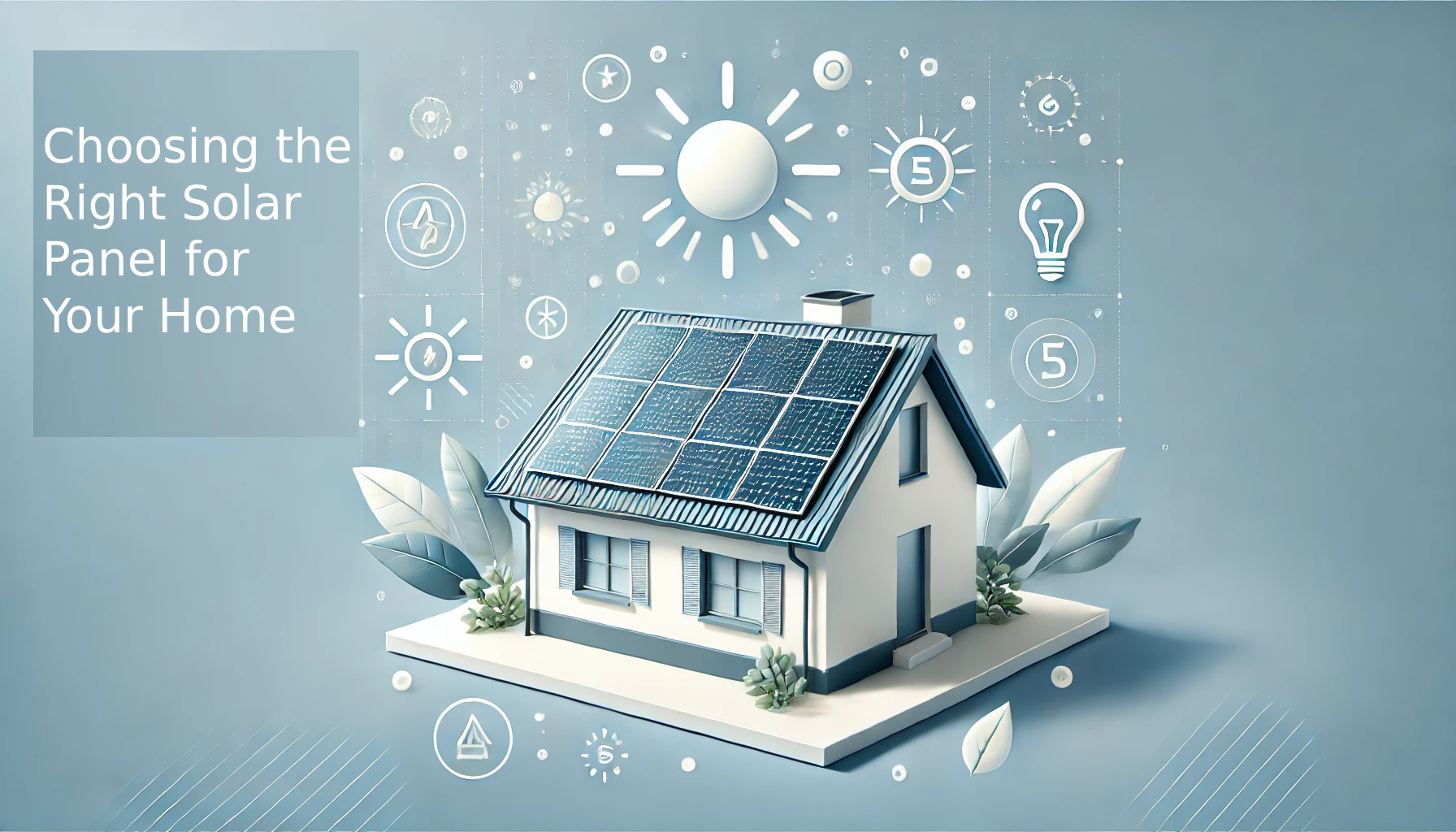
With the rise in energy costs and the increased focus on environmental sustainability, many homeowners in Pakistan are turning to solar panels as a renewable energy solution. Solar companies in Pakistan now offer a wide range of solar systems suited for different home sizes, budgets, and energy needs. Choosing the right solar panel for your home is a major decision that can impact both finances and carbon footprint. This guide will help you navigate through key factors to consider, ensuring you make a choice that aligns with your energy goals, budget, and environmental considerations.
Choosing the Right Solar Panel
Selecting the right solar panel for your home involves several considerations, from energy requirements and panel efficiency to budget and roof space. Ensuring you understand your options will make it easier to choose a solar panel system that aligns with your household’s needs and offers a worthwhile return on investment.
1. Assess Your Energy Needs
Before investing in solar panels, understanding your household’s energy consumption is crucial. Review your past electricity bills to get an estimate of your average monthly usage. This information will help you determine the size and number of panels you need. For instance, homes with high energy use may require more powerful or multiple panels, whereas smaller homes with lower electricity needs can operate effectively with fewer. Tailoring your solar setup to your actual energy demands will ensure your investment yields the maximum benefits.
2. Evaluate Solar Panel Efficiency
Solar panel efficiency refers to the amount of sunlight that can be converted into usable electricity. Higher efficiency panels generally provide more energy output and are an excellent choice for homes with limited roof space. Monocrystalline panels, for instance, are known for their high efficiency, making them ideal for smaller installations. While they are more expensive, the higher energy output can justify the cost over time. Polycrystalline panels, while less efficient, are more affordable and can still meet energy demands in sunny regions.
3. Consider Roof Space and Position
The available space on your roof, as well as its orientation and angle, are key factors in choosing the right solar panel. Panels work best when facing south and installed at an angle that maximizes sunlight exposure. If your roof is partially shaded or has limited space, you may need higher-efficiency panels to make up for these limitations. Additionally, the weight and size of certain panel types may require you to assess your roof’s structural integrity to ensure it can support the installation safely.
4. Budget and Cost Considerations
Solar panels come in a range of prices, influenced by their type, efficiency, and brand. Set a realistic budget based on your energy needs and compare the upfront costs against long-term savings. High-efficiency monocrystalline panels, while more expensive, may be worth the investment if you have high energy demands or limited roof space. Be sure to factor in the cost of additional equipment like inverters and mounting hardware, as well as installation fees. Some homeowners may also qualify for tax credits, rebates, or financing options, which can offset initial costs and improve affordability.
5. Warranty and Durability
Investing in solar panels is a long-term commitment, so it’s essential to choose a product with a solid warranty and proven durability. Most quality solar panels come with warranties covering 20–25 years, which can give you peace of mind that they’re built to last. Additionally, durability varies among panel types, with monocrystalline panels generally offering longer life spans and better performance in extreme weather conditions. Before deciding, research warranty terms for each brand, including coverage for panel efficiency degradation over time. A robust warranty is a sign of the manufacturer’s confidence in the panel’s durability.
6. Choose the Right Inverter
Inverters convert the direct current (DC) energy generated by the solar panels into the alternating current (AC) energy needed to power your home. There are three main types: string inverters, microinverters, and power optimizers. String inverters are common and cost-effective but may not perform well if your roof has shade at different times of the day. Microinverters and power optimizers are more efficient in managing shaded areas and can maximize energy production, though they come at a higher cost. Choosing the right inverter for your setup ensures maximum efficiency and longevity.
7. Check for Certifications and Standards
Selecting solar panels with industry-recognized certifications can provide additional assurance of quality and safety. For instance, certifications such as the International Electrotechnical Commission (IEC) and Underwriters Laboratories (UL) indicate that the panels meet global safety and performance standards. Panels that meet these certifications have undergone rigorous testing, ensuring they can withstand various weather conditions and perform reliably over time. Checking for certifications can prevent future issues and assure you of a quality product, especially if your area experiences extreme weather conditions.
Conclusion
Choosing the right solar panel for your home can seem complex, but by assessing your energy needs, roof characteristics, and budget, you can make a decision that maximizes your investment. Evaluate panel efficiency, durability, and inverter types to ensure your solar system meets your expectations both now and in the future. With the added assurance of warranties and certifications, the right solar panel setup can deliver sustainable energy, cost savings, and greater independence from traditional electricity sources. A well-chosen solar panel system doesn’t just reduce electricity bills—it also contributes to a greener planet, making it a worthwhile addition to any eco-conscious home.